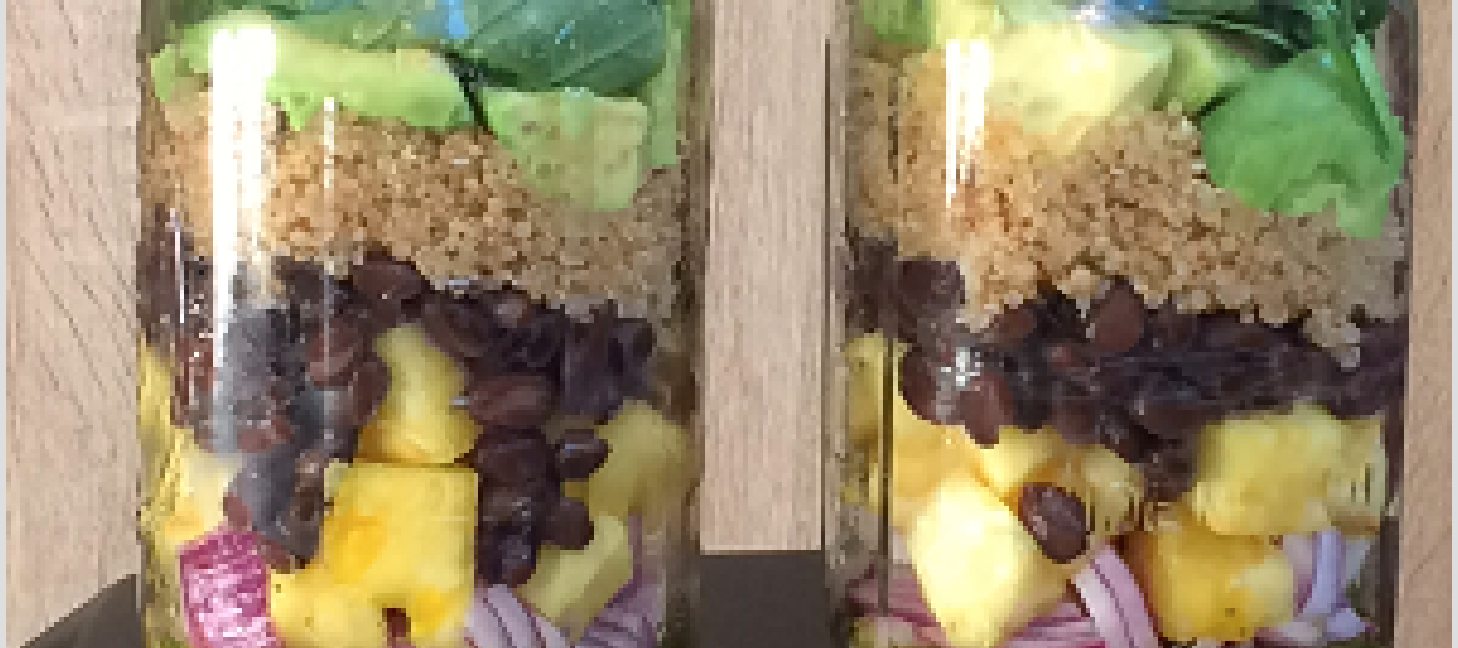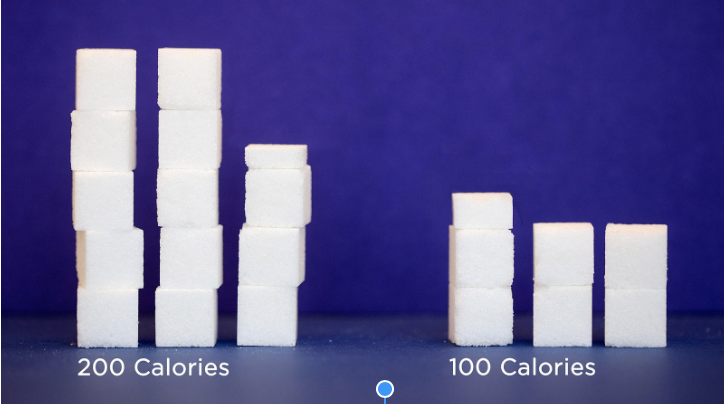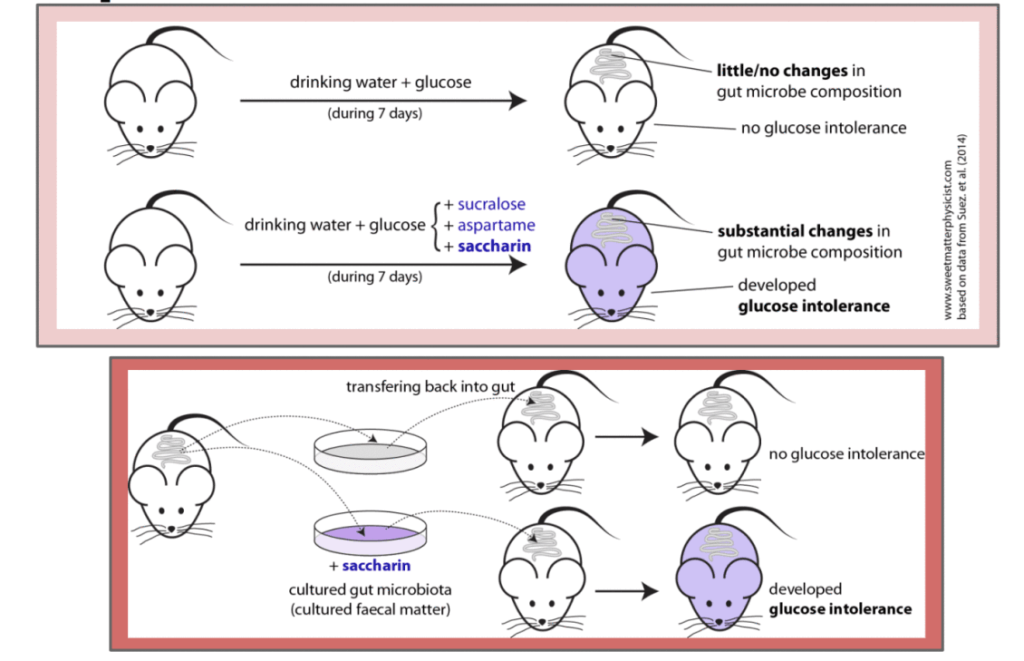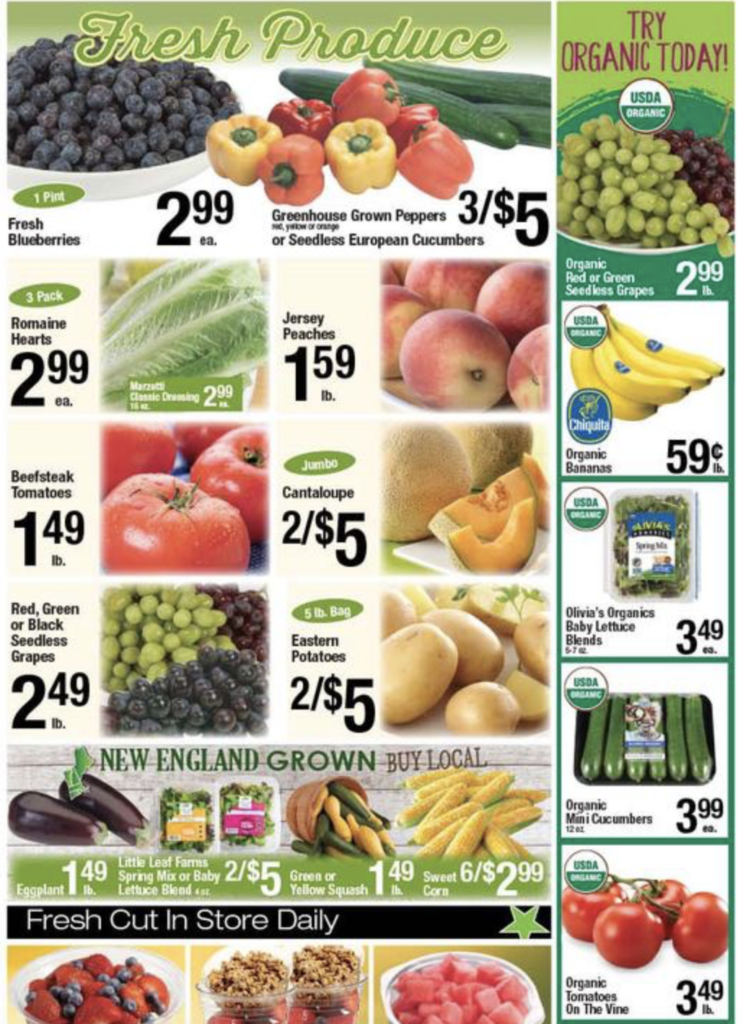Whether you are a student or in the working world, most of us don’t have the luxury of preparing and eating lunch at home.
Beyond sandwiches, it can be a bit of a challenge to come up with tasty lunches that are both easy to prepare and travel well. I love making fresh salads, and my favorite way to transport them is with mason jars! They keep all of the ingredients separate until ready to eat without having to carry 5 separate containers.
 The Mason Jar Salad!
The Mason Jar Salad!
There are many great recipes out there and the first one I tried was a Mango, Avocado, and Black Bean Salad. I couldn’t find a ripe mango at the grocery store so I chopped up fresh pineapple instead. The best part is that I was able to pack a few jars on Sunday night, which made getting out of the house on time much simpler.
The trick is to layer the salad so that all the ingredients stay crisp and fresh.
 The basic order of ingredients is:
The basic order of ingredients is:
- Dressing – This recipe called for vinaigrette made with lime juice, olive oil, honey and chopped cilantro.
-
The next step is to create a buffer between the dressing and the salad greens. You can add harder, sturdier vegetables or fruit such as carrots, cucumbers, peppers, or onions. I added some chopped red onion and pineapple so they could mellow in the dressing as it sat for a couple of days.
-
The next step is to add beans, grains or pasta. I added a layer of black beans, and then a layer of quinoa.
-
The next layer should be softer vegetables and fruits. I added some chopped avocado that I had coated with lime juice and salt to keep from browning.
-
Finally, I added some fresh spinach and screwed the lid on tightly. When I was ready to eat my lunch on Monday afternoon, all I had to do was unscrew the lid and shake the salad into a bowl, or just shake up the jar and eat it straight from there! I am pleased to report that it tasted absolutely delicious! I am excited to try some new recipes and maybe add some nuts, seeds or (vegan) cheese to my next batch.
 Mango Avocado Black Bean Salad
Mango Avocado Black Bean SaladIngredients:
- 2 ripe but firm avocados, halved, peeled and cubed
- 1 tbsp. fresh lime juice
- 2 ripe but firm mangoes, peeled and cubed
- 1 jalapeno, seeded and finely chopped, or 1/2 cup chopped red onion
- 2 tbsp. lime juice
- 1 tsp. apple cider vinegar
- 2 tbsp. chopped cilantro, plus more for garnish
- 1/2 tsp. sea salt
- 1/2 tsp. honey
- 3 tbsp. extra-virgin olive oil
- 1 – 15 oz. can black beans, rinsed and drained
- 4 cups of spinach
- 1 1/2 cups of cooked quinoa
 Instructions:
Instructions:
-
Add the avocado, 1 tbsp. lime juice, mango, and jalapeno to a large bowl and gently toss.
-
Whisk together 2 tbsp. lime juice, apple cider vinegar, cilantro, salt, honey together in a small bowl.
-
Once those ingredients are mixed well, add olive oil slowly while continuing to whisk. Pour dressing over avocado mixture, add black beans and gently toss. Serve over a bed of spinach with quinoa.



 Here’s what you need to make this delicious autumn quinoa salad:
Here’s what you need to make this delicious autumn quinoa salad:
 There is confusion over why the use of artificial sweeteners has not been aiding in weight loss. Some studies even show opposite effect. Another interesting fact worth noting is that overweight people often have different bacteria in their intestines than slim people do, but it is not clear what the link is & whether or not bacteria somehow cause obesity or diabetes. However, it has been found that even though artificial sweeteners do not contain sugar, they still directly affect the body’s ability to metabolize glucose. More specifically, they can lead to glucose intolerance: the inability of the body to cope with large amounts of glucose, the first step towards diabetes.
There is confusion over why the use of artificial sweeteners has not been aiding in weight loss. Some studies even show opposite effect. Another interesting fact worth noting is that overweight people often have different bacteria in their intestines than slim people do, but it is not clear what the link is & whether or not bacteria somehow cause obesity or diabetes. However, it has been found that even though artificial sweeteners do not contain sugar, they still directly affect the body’s ability to metabolize glucose. More specifically, they can lead to glucose intolerance: the inability of the body to cope with large amounts of glucose, the first step towards diabetes. In an experiment led by Dr. Eran Elinav of the Weizmann Institute of Science’s Department of Immunology, and Prof. Eran Segal of the Department of Computer Science and Applied Mathematics, mice were given water laced with 1 of 3 types of sugar substitutes (aspartame, saccharin, sucralose), water, or water with sugar.
In an experiment led by Dr. Eran Elinav of the Weizmann Institute of Science’s Department of Immunology, and Prof. Eran Segal of the Department of Computer Science and Applied Mathematics, mice were given water laced with 1 of 3 types of sugar substitutes (aspartame, saccharin, sucralose), water, or water with sugar.











